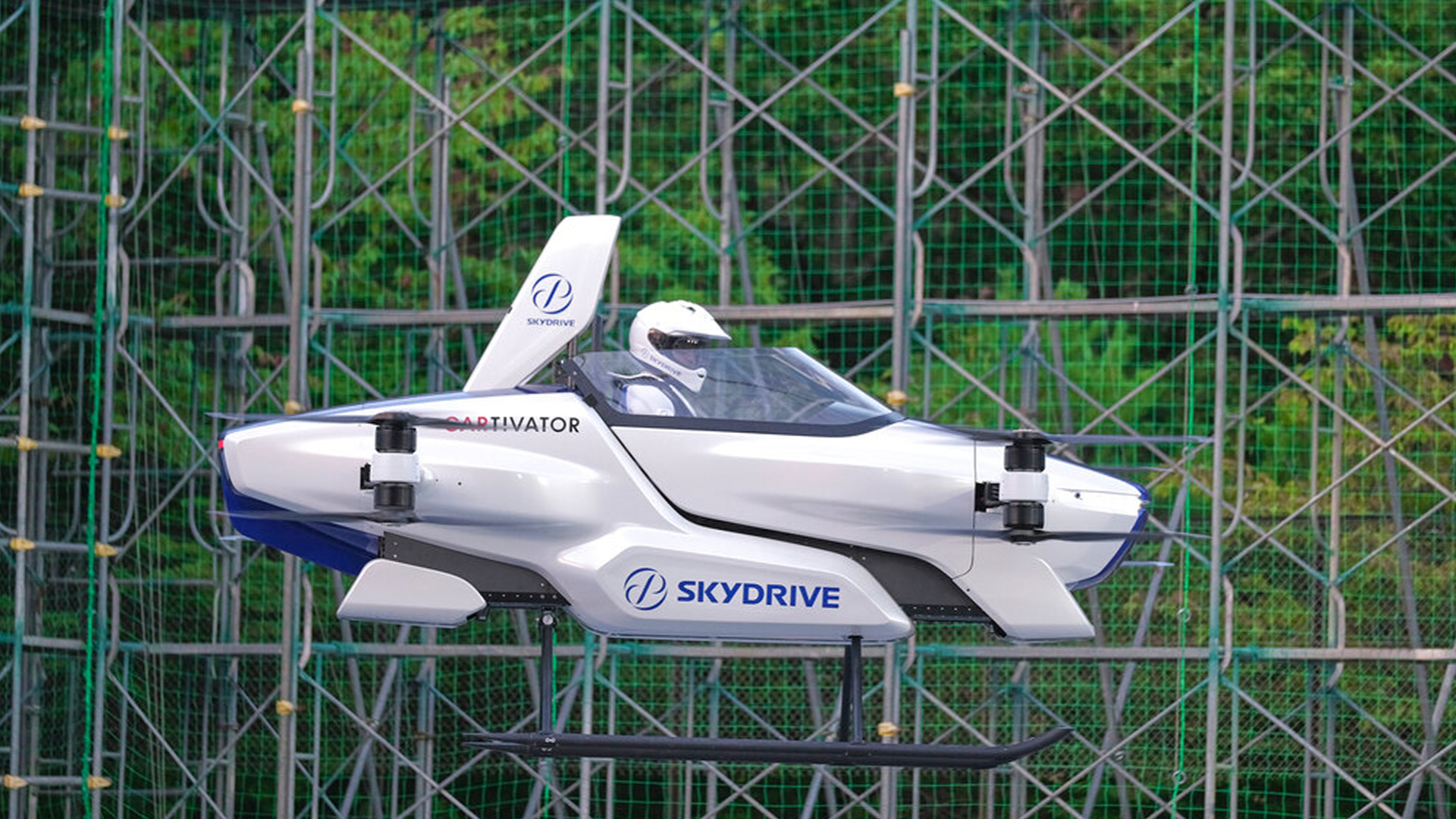

With so many flying car projects in development, they make it seem like people are just waving blank checks at engineers. Every year we read about flying cars being right around the corner, but reality says otherwise.
Last week, I talked about the closest vehicle we have in the United States to a working flying car, which is a plane with a steering wheel that can fold its wings, more or less. It’s called the Terrafugia Transition, based in Boston, and the crew behind it has been promising production for 10 years.
Now we look at SkyDrive from Japan. This project started in 2012 and has created a one-person vehicle capable of lifting vertically off the ground. Just this week it conducted its first successful flight with a person behind the…um…wheel. In this test, the quad-propeller vehicle manages to perform an electric vertical take-off and hover for four minutes, six and a half feet off the ground. It was a modest test, but a success as both the SkyDrive and rider landed safely.

SkyDrive claims it’ll have this vehicle production-ready by 2023. In terms of a practical flying car, one that can do vertical take-offs and seamlessly land is a step in the right direction—no need for long runways or landing pads. The vehicle can only sustain flight for 10 minutes at the moment, but the next set goal is to stretch that to 30 minutes.
According to Tech Xplore, SkyDrive has secured $37 million in funding to continue this project. One investor is the Development Bank of Japan. The article states that the Japanese government is optimistic about this idea and is developing a “road map” to create a business service by 2023 and commercial use in the 2030s. They see the SkyDrive, if it works as intended, as a potential lifeline during disasters as well as an opportunity to connect remote areas. In theory, yes, those are two powerful benefits to look forward to in the future with flying cars.
Flying cars fall into roughly the same category as fully self-driving cars, though. The technology exists and is being tested; both promote a future of machine-reliant safety; and, importantly, there is currently nothing of the sort in production. I’m talking Level 5 autonomous vehicles. Not to mention both sectors will need dedicated infrastructure before we start living like The Jetsons.
Lastly, sky traffic is another concern. Commercial airlines have air traffic control to keep planes out of each other’s way, but what about flying cars? We have to figure out the rules of the sky first. Then there will be the bureaucratic task of creating new laws, insurance policies, service stations, retailers and part vendors. On top of that, people may still not want flying cars because they don’t trust them—again, a striking similarity to autonomous vehicles.
If we started a pool to bet on when flying cars will have their own MSRP and insurance quotes, I ask you—what year would you place your bet on?
Got a tip? Send us a note: tips@thedrive.com